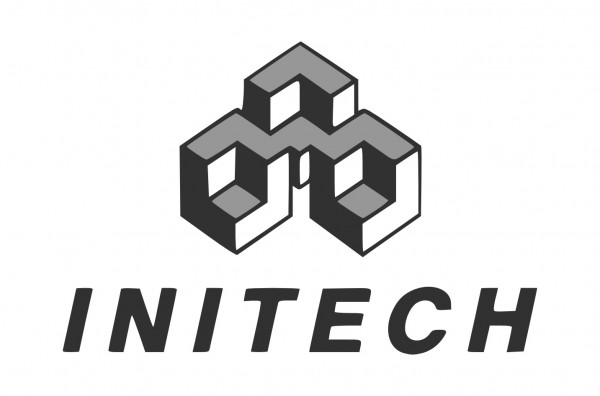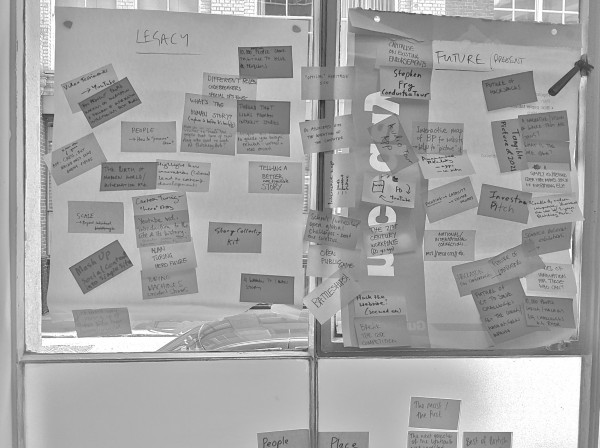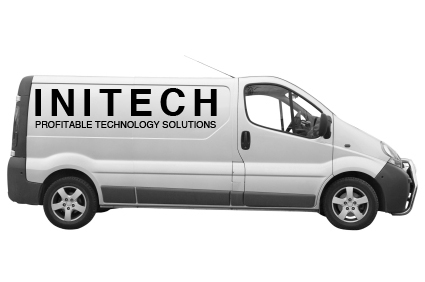Choosing a tagline looks easy, but choosing a tagline that works well for a technology startup is surprisingly hard. There are several common mistakes that new startup team make when choosing their tagline. These are easily avoidable if you know what to look out for.

I’ve been helping a software startup recently with their search for a new tagline. Like many bootstrapped startups, they don’t have enough cash for a full brand strategy project. Even so, to create a tagline that works you still need more strategic thinking than just jumping straight to the whiteboard by yourself to pull a tagline out of your a__.
Six criteria for a good tagline
I usually recommend against DIY brand strategy even for a small startup that’s strapped for cash. Like any marketing challenge, you can be too close to the problem to see the best solutions. Branding can be hard to outsource in the early days because you need to live with the outcome every day but that makes it even more important to get outside help. That said, if it helps you to understand how the process works then I’m happy to share with you some criteria for what makes a good tagline. My hope is that this will help you assess the options presented to you by someone who does this for a living. If you’re determined to try it out for yourself then these secrets will also give you an idea of what you’re looking for during the creative process.

The most important thing to ask is where your tagline will be used. Is it going on the back of your business cards? On the signage outside your office? If you are a tech startup with a quirky name then you will mostly be using your tagline locked-up below your wordmark as part of your logo.
Let’s be honest, you probably need a tagline hanging under your logo because your name doesn’t have enough industry recognition (yet) for people to instantly know what it is that you actually do. In this case, the audience for your tagline is people who are already shopping for what you have, but don’t yet know whether or not you sell it.
1. A tagline is not about you, it’s about the pain that you solve
I judge taglines for tech startups by the Van Signwriting test: If I see your tagline on a van or a company car, I ask myself “Do I instantly know what that company really does and whether it’s relevant to what I need?” A general promise about “Profitable Technolgy Solutions” doesn’t focus in on a specific pain that I might already have as a potential customer or your role in solving my specific problem.
Or to use the terminology from the Lean Startup and Business Model Generation, what is the “job” that the user is trying to do? Your tagline needs to address the specific “User Job” that your product helps them to get done.
Too many tech companies get caught in the same trap as the company Initech from the movie Office Space and drown their employees and customers in corporate and technology jargon. Their fictional tagline is something like “Profitable Technology Solutions” which leaves no one any closer to knowing what the company actualy does.

Technology marketing works best when you start with an existing customer pain and then find a solution to that pain. Imagine that your customer’s pain makes them like a group of people walking around with a big padlock around their necks. They are looking for a key to unlock their particular padlock. Sure, they’d like to choose the cheapest, most reliable, nicest key that their peers also use. But before any of that, they just want to know, “Can you solve my specific pain?” To answer this, people need to know what industry you are in and what industries you serve.
A practical and pragmatic industry-level tagline might seem boring to you if you really wanted to focus on your company-level points-of-difference but if the tagline explains what you do clearly enough at an industry level then it can help people make real buying decisions.
2. A tagline is not your brand essence
BMW’s brand essence is Driving Excellence but they have never used it as a tagline. They have used all sort of variations ranging from “Driver’s Car” to “Driving Joy” through to the perennial “Ultimate Driving Machine”. But none of these external taglines full revealed their secret internal brand essence. The reason that great companies don’t wear their hearts 100% on their sleeves is that an internal brand essence is about what your vision is for the impact that you will have world. For BMW, the vision remains a constant while the advertising and taglines can change over time.

Sharing your mission, your promise and your brand essence in a tagline is just too much information, too early. If you’ve ever done any personal development then you might have flirted with finding your life purpose. It’s likely to have been a variation on “Contributing to Others”, “Leaving a Legacy” or “Loving Life”. As powerful as a life purpose is, it would be a bit weird to walk up to a stranger at a party the first time you met them and say “Hi, my name is Bob and my life purpose is to spread joy in the world. How’s your night going?” Don’t try and make your tagline convey the deepest secrets of your company or be a manifesto for changing the world. Keep things simple.
3. A tagline is not your features and benefits
If you’re asking your tagline to close the sale for you then you are also being premature. You don’t need to get your audience all the way to a purchase based only on the tagline. You only need your audience to be interested enough to want to find out more. This also means not going too far down the line of practicalities. The goal of a tagline is to stimulate interest. The individual features and benefits of your product are not relevant yet. Stick to being specific about the industry that you serve and the pain that you solve.
4. A tagline doesn’t need to cover everything you do
Most tech companies sell a range of products and services. Even when you’re small there will still be a mix of off-the-shelf products, custom-builds and maybe even a little bit of consulting. I hate taglines that are a shopping list of all the things that a company sells. Pick whichever service you are best at, get the best margin on, or that best defines your position the market. A tagline should help you focus. I like to think of a tagline like the central tent-pole of a large circus tent. The tent itself might cover everything that you do, but the tent-pole just has to provide a central focal point.
5. A tagline is not a vague promise about the outcomes you sell
I rant a lot about how technology companies jump to selling the Why without explaining the What or the How. If your tagline has the words “solution” or “profit” in it then you have probably made a grave error in the psychology of how people buy products. Sure, you might provide “Enterprise Technology Solutions that Increase Profitability.” But so do photocopiers and Human Resource software processes. If you try to sell only the outcome then your tagline will be too vague to be useful. The old advertising adage that you should “Sell the hole, not drill.” or that you should “Sell the sizzle, not just the sausage.” only works if people know what “drills” and “sausages” are in the first place. If your startup is in a whole new product category then people may not actually know that they want a hole or a sausage yet. Your tagline just needs to convey what you do, it doesn’t need to covey why you do it.
6. A tagline is does not have to be unique
Never kill a tagline because “It could just as easily apply to our competitors”. For startup marketing, a tagline similar to your competitors probably means that your tagline is doing a good job of describing your industry. The uniqueness of your corporate personality will probably mean that the right tagline will still be a little different from your competitors. However, your tagline is not there to differentiate you, that is the job of your brand name, key messages and brand stories.
Next steps: Test your tagline and iterate fast
The sum of all these rules will be a practical tagline that is probably less sexy than you were hoping. So I’ll give you one final test that has a practical upside. If you’ve followed these rules then your tagline will be pure gold for SEO purposes. Remember people will be searching for practical tools that they can use to solve their own unique pain.
If you want to test a tagline, go to your google analytics dashboard and spot what searches people are making that hit your site the most. Then use the google adwords tools to figure out what other common terms your audience are also searching for. Combine the best of these into 5 tagline candidates and then test each tagline as the headline of an adwords advertising campaign to see which ones work best. You can also use social media to get feedback and iterate your tagline.
I hate to give a formula for taglines but sometimes people do need a starting point in an emergency. If you are ever stuck in a brainstorming session that’s gone on too long or a weekend hackathon and need to choose a tagline in a hurry then just fill in the blanks of:
We solve [pain X] for [group Y] by [doing Z].
Then iterate from there.
In the end, you’ll have to make the final judgement call, but keep in mind why you wanted a tagline in the first place. To build your business, that will take clarity, focus and the occasional moment of pragmatism.
Note: This article featured in Hacker News on Christmas Day in 2012. It was a great Christmas present and I’m excited to be part of a conversation among so many great entrepreneurs. Several of the comments and tweets about this article have since been added into the ideas for testing and iterating in the article. It seems that the key to a lean brand is agility and flexibility. My book on digital marketing for technology companies also includes whole chapters on brand strategy and market positioning.

Peter,
Nice post. Thanks!
I especially appreciate #2. When working with a client to clarify their essence, they are often so thrilled to have their brand so succinctly defined that they can’t wait to share it with the world as part, or all, of their tagline. One thing we like to point out is that the brand essence is ideally permanent immutable, yet the tagline is one of the most frequently updated elements of a brand system. The tagline is that season’s fashion, while the essence is one’s perennial sense of style.
Another point that we’ve noted is a common evolutionary arc in tagline development, from direct and tactical at launch to increasingly esoteric and values-driven as the brand evolves and gains awareness and confidence.
Thanks Jon, you’re right that a tagline can evolve towards being more emotional and less pragmatic once the company matures and evolves. And once the market and/or category matures and evolves.
Great article Peter. What’s interesting here is most Startups have a name and trying to cycle through and come up with a list of taglines that work for that name. My approach has always been to get the tagline(s) first and the name of the startup is born out of that process. The article is good at talking about what a tagline is not, which is helpful, I’d also like a bit more on how to create the tagline, next to the name it is so important to get the tagline right to hook a potential customer with something relevant.
Thanks Klaus, good point that the tagline is only part of a larger picture. As you’ve spotted, the tagline exists in a context. I had a stab at summarising the context in my article about brand strategy for entrepreneurs https://www.peterjthomson.com/2012/04/brand-creation-for-entrepreneurs.html It’s all about building a framework that can be adapted as a company pivots and iterates.